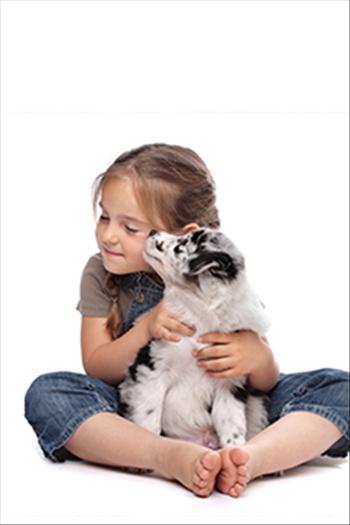Getting a new pet
Duration/age

Getting a new pet is an exciting event and your child will learn a lot. First you need to discuss what the most suitable pet for your family is. A large dog might not be great in a small flat, but hermit crabs might be perfect. You also need to think about how much a pet costs to buy and look after. Once you have decided to get a pet it's time to find out a bit more - write down a list of what you want to know.
What kind of pet would be good for your family? You could look online, go to the library or ask other people.
When you have chosen your pet, you need to find out where to get it. Will it be from the animal shelter, a pet shop or a breeder? What else will you need to buy for the pet?
What do goldfish need?
Your pet will need food, a place to live and maybe toys. Then you can bring it home and choose a name. You could make a list of names and vote.
Does he look like an 'Arthur' or a 'Oscar'? Let's vote on it.
Materials you will need
- Paper
- Tablet / smart phone
- Computer
- Pencils
- Books
Alternative tools
- Newspaper
Skills this activity improves
Why does this matter?
Helping to choose a pet gives children the chance to learn new words, to make decisions, and to problem solve. Using the internet or a library helps children learn about sources of information. Talking about the size and suitability of pets is using mathematical ideas like too big, too small, too many, too fast, just right. Voting on the name of the pet is a way of using data.
What does this lead to?
Children are effective problem solvers and this activity enables children to demonstrate their problem solving and represent their thinking through data and the use of mathematical tools. Children will gain an understanding of mathematical concepts like sorting and classifying. Children will develop a richer language and an increased vocabulary which supports reading and writing. It also helps them to understand that we can take spoken language and write it down to share knowledge with other people, even if we are not there.
Language to use
- Dog, cat, rabbit, puppy, kitten, hermit crab, goldfish, lizard, stick insect, guinea pig, axolotl, chicken, chook, duck, goose
- Big, bigger, biggest, too big, small, enormous
- Soft, smooth, scaly, teeth, claws, busy, sleepy, walk, run, feed, eat
- Cheap, expensive, price
- Pet shop, shelter, farm
- Aquarium, kennel, basket, tank, hutch, coop, mat
- Shots, inoculations
- Lead, collar, tag, bowl
Questions to use
- What kind of animal will we get?
- Where will the animal live?
- What will the animal eat?
- What will we need to buy to care for our pet?
Useful tips
- You might also want to look at the Setting up a fish tank activity.
- Remember to talk to your child in your home language.
Variation by age
Birth to two year olds
- You might like to read "Dear Zoo" by Rod Campbell.
- Search online for websites about different animals that you can keep as pets.
- Borrow books from the library about keeping pets.
Three to five year olds
- You might like to read "Dear Zoo" by Rod Campbell.
- Search online for websites about different animals that you can keep as pets.
- Borrow books from the library about keeping pets.
Questions to ask
- What kind of animal will we get?
- Where will the animal live?
- What will the animal eat?
- What will we need to buy to care for our pet?
Questions to ask
- What kind of animal will we get?
- Where will the animal live?
- What will the animal eat?
- What will we need to buy to care for our pet?


